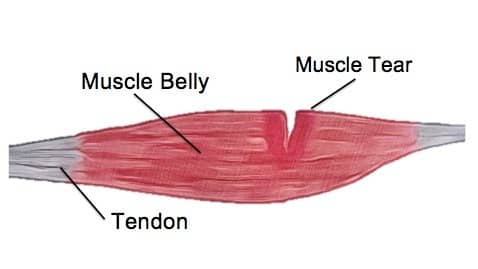How to prevent muscle tears in yoga workout
In our blogs, we have explored the innumerable benefits that yoga provides. We have gone on to say that yoga is not only a great mental exercise but a significant physical endeavor too. As with any exercise, there are certain points that you need to consider while practicing yoga. For starters, you might suffer from muscle tears in yoga workout if you don’t do it properly. We don’t mean to frighten you but rather give you an idea about what you are getting into.
Through this blog, we shall shed some insight into the common yoga injuries and how you can prevent them. Once you familiarize yourself with this concept, you can practice yoga more healthily and efficiently.
Let’s learn a bit about the different types of muscles that are in our body first and then we shall look at the injuries.
TYPES OF MUSCLES
1. Skeletal muscles
The skeletal muscles comprise the joints, tendons, ligaments, nerves, and cartilages. The objective of these muscles is to act as a frame that supports the body. Also, it controls the posture from the head to toes. Through a well-designed yogic course, one can boost the performance of the skeletal muscles.
2. Smooth muscles
The smooth muscles are involuntary. Many people think that they don’t need consideration for muscle tears in yoga workout but the reality is far from that. The smooth muscles are found in the walls of organs like the intestines, stomach, uterus, and the urinary bladder. By practicing yoga, one can learn to relax these muscles.
3. Cardiac muscles
The cardiac muscle finds itself in the human heart. We have been pressing the relationship between the heart and yoga for a long time. There is even a separate program called ‘cardiac yoga’ that caters to the needs of a heart patient. This yoga deals with accentuating the heart functions and promoting a healthy lifestyle.
Now, that we have understood the different muscle groups, let’s take a look at the different muscle tears in yoga workout.
TYPES OF INJURY
1. Wrist
The wrist is a minute joint and is under immense stress in daily life. Now, add the burden of yoga poses like side plank and downward-facing dog. Too much pressure on the wrist can cause severe damage and even disrupt your yoga schedule. Here’s how you can prevent such muscle tears from happening.
- Turn the fingers inward
- Avoid cupping the palms
- Maintain the distance between shoulders and wrists
- Build a solid foundation with the knees
2. Lower Back
The funny thing about lower back pain is that most people take yoga to get relief from it but when done incorrectly, it causes more problems. Rounding the spine too much and over-stretching are the common problems in yoga. If continued for excessive periods, it can lead to muscle tears in yoga workout. Here’s how you can deal with that.
- Activate your core during the stretches
- Breathe slowly and gently
- Bend your knees and allow the lower back to decompress
3. Shoulders
In yoga, you have to raise your arms for prolonged periods. Also, you might have heard the teacher saying ‘Relax your shoulders’. This statement has its importance as if you keep the shoulders tight, then the shoulder compresses and consequently, causes injuries. There is nothing more nagging than a shoulder injury that just won’t go away. You can prevent this problem by
- Warming the shoulders before exercise
- Not pulling too hard in stretches
- Following the guidance of the teacher
4. Hamstrings
In this age where we spend most of our time sitting on a desk, our hamstrings tend to get tight. And as most yoga exercises involve activating the hamstring, if not done properly, it leads to muscle tears in yoga workout. Suffering from a hamstring injury is cumbersome as it prohibits you from walking too. Here’s how you can prevent it from happening,
- Warm-up your hamstring before exercise
- Stretch your hamstrings daily if they are tight
- Do light workouts that activate hamstrings
You can read the article related to how yoga help in case of shoulder pain.
5. Neck
Once you progress through yoga, you will do serious exercises like headstands and shoulder stands. These exercises are not only difficult but they place immense stress on your neck. If done incorrectly, it leads to neck issues. Here’s how you can prevent such problems from happening.
- Stretch your neck before starting the exercise
- Avoid such poses if you suffer from neck issues
- Give your neck time to relax after performing such exercises
These are the common muscle tears in yoga workout that occur if you don’t follow the necessary protocol. Have a safe yoga journey!

